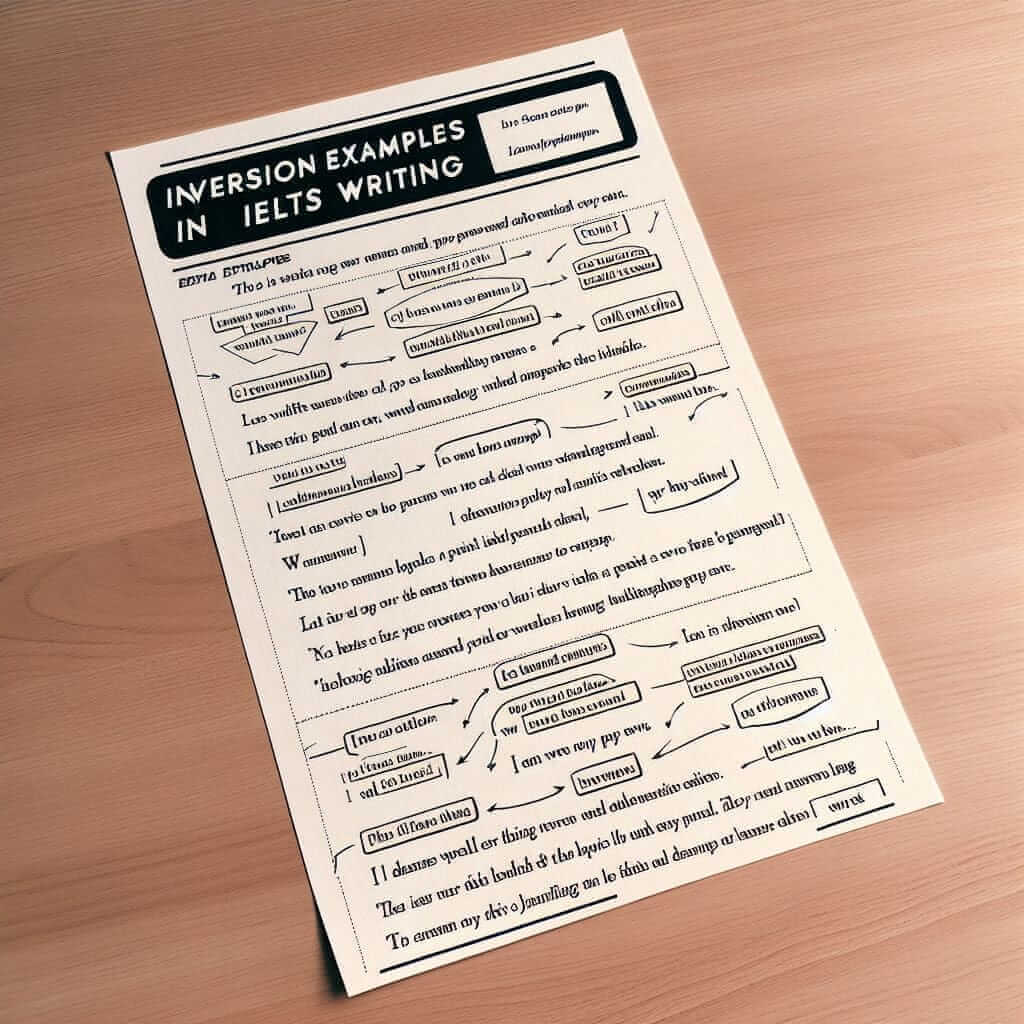Have you ever encountered sentences like “So impressive was his performance that he got a standing ovation” and wondered about the unusual word order? This structure, known as inversion, might seem complex at first glance, but it’s a powerful tool for adding sophistication and emphasis to your writing, especially in the IELTS exam. Mastering inversion can significantly enhance your grammatical range and style, boosting your band score.
Let’s take a look at a few examples of how inversion can be used in different sections of the IELTS exam:
Speaking:
- “Never have I seen such a beautiful sunset!” (Expressing surprise and awe when describing a memorable experience)
- “Not only does she excel in academics, but she is also a gifted athlete.” (Highlighting multiple qualities while discussing personal attributes)
Writing Task 2:
- “Only by investing in renewable energy can we combat climate change effectively.” (Emphasizing a crucial solution in an essay about environmental issues)
- “Rarely does one find such a well-preserved historical site.” (Adding emphasis to a point about cultural heritage)
Understanding Inversion
Inversion involves reversing the typical subject-verb order in a sentence. Instead of the standard “Subject + Verb,” we use “Auxiliary Verb + Subject + Main Verb.” This shift in structure places greater emphasis on the adverbial phrase or negative expression that begins the sentence.
Why Use Inversion in IELTS?
-
Elevated Style: Inversion is a hallmark of formal, academic writing and speaking. Using it demonstrates your command of a wider range of grammatical structures, which is crucial for achieving a high band score.
-
Emphasis and Impact: By altering the expected word order, inversion draws attention to specific parts of your sentence, making your writing more impactful and memorable.
Inversion: Forms and Functions
1. Inversion with Negative Adverbs
Formula: Negative Adverb + Auxiliary Verb + Subject + Main Verb
This form is common with adverbs like “never,” “rarely,” “seldom,” “hardly,” “scarcely,” “no sooner,” and “not only.”
Examples:
- Never before had I witnessed such bravery.
- Hardly had she finished speaking when the audience erupted in applause.
- No sooner had I stepped outside than it started to rain.
IELTS Application:
Use this structure in Writing Task 2 to present arguments forcefully, introduce surprising statistics, or highlight contrasting situations. In speaking, it adds dramatic flair to narratives and opinions.
2. Inversion with “So + Adjective” and “Such + Noun”
Formula: So + Adjective + Auxiliary Verb + Subject + Main Verb
Formula: Such + Noun + Auxiliary Verb + Subject + Main Verb
This type of inversion emphasizes the intensity of a quality or situation.
Examples:
- So captivating was her voice that the entire room fell silent.
- So severe was the storm that many trees were uprooted.
- Such was the force of the impact that the car was completely destroyed.
IELTS Application:
Ideal for descriptive passages in Writing Task 1 (describing trends or processes) and Task 2 (illustrating a point with vivid examples). It can also enhance your speaking when sharing personal anecdotes or expressing strong opinions.
3. Inversion with “Only” and “Not Until”
Formula: Only + Adverbial Phrase/Prepositional Phrase + Auxiliary Verb + Subject + Main Verb
Formula: Not until/Only when + Clause + Auxiliary Verb + Subject + Main Verb
These structures emphasize a condition or time restriction.
Examples:
- Only after years of research did she finally find a cure.
- Only when we learn to cooperate can we solve global challenges.
- Not until I saw it with my own eyes did I believe it was possible.
IELTS Application:
Perfect for presenting solutions in Writing Task 2, highlighting crucial factors in a process, or expressing personal realizations in speaking.

Common Mistakes to Avoid
-
Overuse: Inversion is effective when used sparingly. Don’t force it into every sentence, as it can make your writing sound unnatural and overly formal.
-
Incorrect Verb Form: Pay close attention to subject-verb agreement and the correct auxiliary verb to use in inverted sentences.
-
Informal Context: Avoid inversion in informal writing or speaking tasks, as it might seem out of place.
Conclusion
Mastering inversion is a surefire way to elevate your IELTS writing and speaking, allowing you to express yourself with greater clarity, emphasis, and stylistic flair. By understanding its various forms and practicing its application, you can confidently incorporate this sophisticated grammatical tool into your IELTS preparation and achieve your desired band score.